Why offer one delivery?
Home delivery was one of the major trends of the pandemic, as people locked down at home relied on stores bringing their groceries to them rather than heading out to the shops themselves. Now lockdowns are – it seems – a thing of the past, is there still an appetite among customers to get their shopping delivered to their doorstep? James Taylor, head of central operations at Nisa, thinks so, believing that the pandemic merely accelerated a trend that was already happening and that home delivery is now cemented into current customer expectations.
“Many shoppers have now come to expect some sort of delivery service from their local stores, particularly in light of Covid-19, so we’re working closely with the range of providers and continue to see some fantastic successes for our partners across the whole of the UK,” he says. In fact, this rapid growth in home delivery has brought benefi ts for retailers looking to get involved. Retailers now have more options to choose from and the support structures are also improving. The benefi ts of a home delivery service are considerable if it is done well. Retailers can increase basket spend without having to increase the footprint of their store or endure crowded aisles. For many retailers, it also offers a chance to grow their customer base beyond the limits of their local demographic.
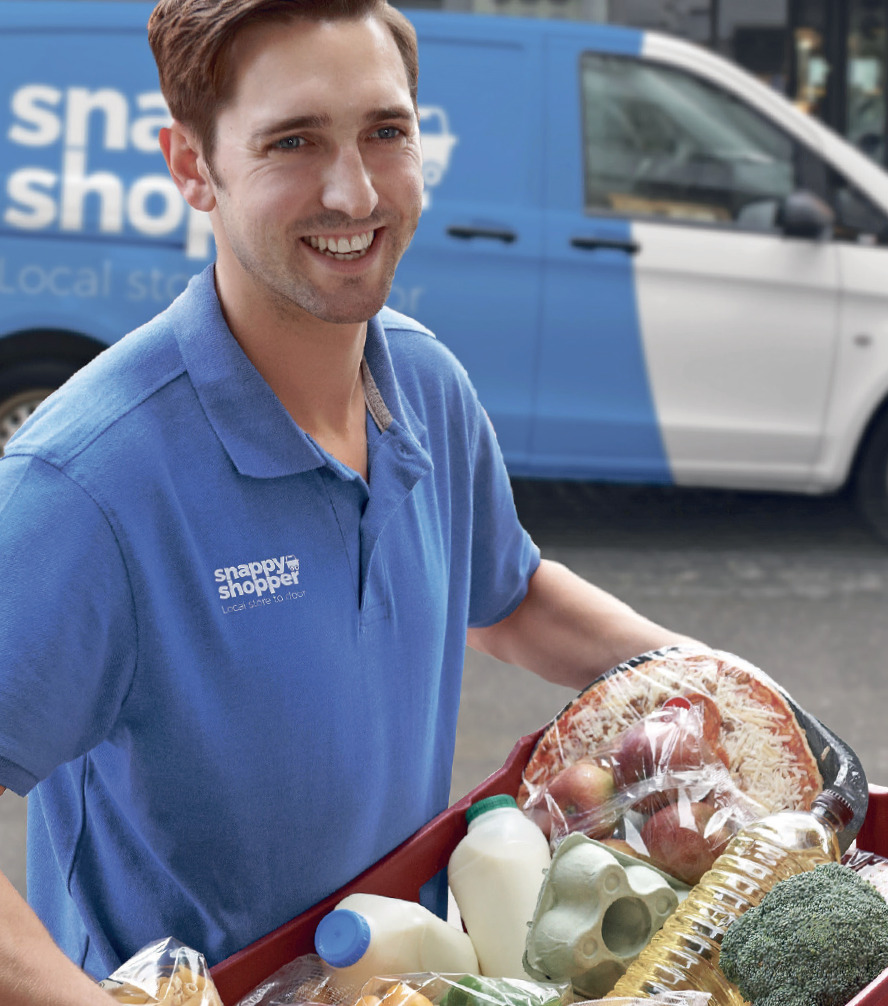
“One key stat with Snappy Shopper is that 80% of the customers that purchase from these stores using the app would not otherwise have visited, says Dael Links, head of marketing (B2B) at Snappy Shopper. “Home delivery doesn’t cannibalise sales in that store, it allows retailers to expand beyond their original catchment.” Reuben Singh Mander, from The Three Singhs in Selby, North Yorkshire, is building a plan to get a delivery service in place at his store, working with his wholesaler Parfetts to choose the right provider and fi nalise an offer. While he started offering deliveries to vulnerable and elderly customers during the pandemic, demand is continuing to rise. “Looking at other shops, it’s becoming a bigger part of the industry. We’re defi nitely getting more enquiries from customers about it,” he says. “It’s going to be a must. “By the end of the year, the majority of shops will be offering some kind of delivery service, and the quicker you get started on it, the better.”
Working out the price
The extra income that comes from delivery can be a considerable boon to retailers, particularly as we continue to wade into these challenging fi nancial times. But it is important to remember there are costs involved as well when it comes to delivery, and retailers need to think seriously and work out their fi nancial plans before embarking fully into the delivery adventure. “With rising costs and infl ationary pressures, this could be prohibitive for both retailer and shopper,” says Greg Deacon, chief customer offi cer at Jisp.
“Price and convenience will be key to growing this incrementally, with these pressures being felt by all, along with normalised routines returning from customers. “Every retailer, if starting from scratch, needs to consider these factors in deciding to drive delivery. If you have a delivery in place, it should be all about how you communicate, differentiating your offering and fi nding ways to optimise costs and baskets.” If you are pairing with an app such as Deliveroo or Uber Eats, you could face a 30% commission charge from them, which will hit your margins. Apps such as Snappy Shopper don’t charge so much, but you, as the retailer, must provide the van and the driver to complete those deliveries, which will increase spending on fuel, wages and training. A delivery fee or increased prices on delivered goods could be considered to cover this cost, but retailers must be wary.
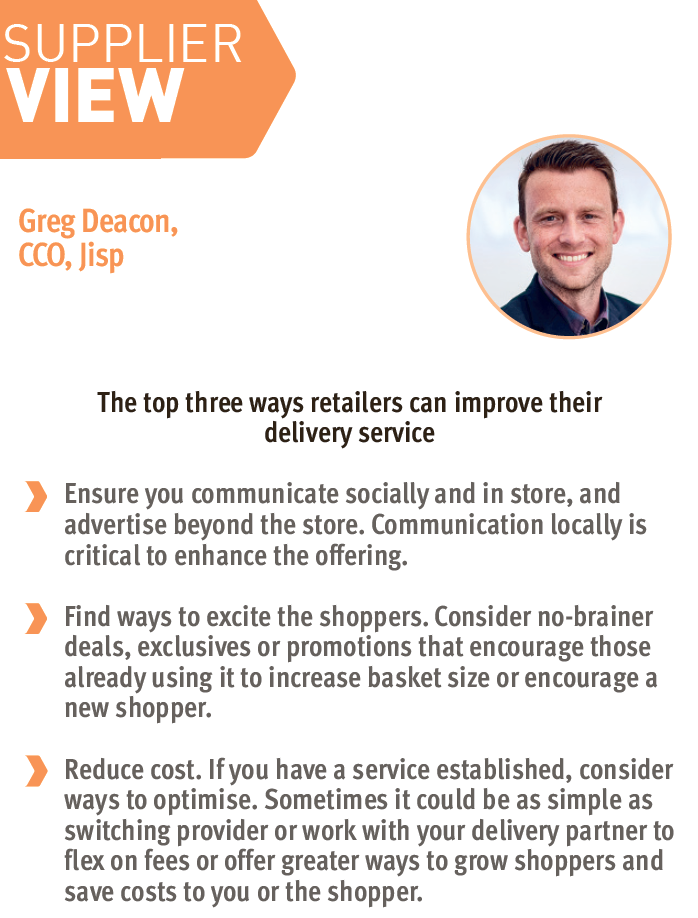
“A retailer with a regular and repeat customer base could receive negative feedback for listing products with a higher price online compared with in store, especially if a delivery charge and or service fee is also applied to the transaction,” says James Widdowson, group sales and marketing director at Appy Shop. “With regard to products being delivered, retailers should consider how they are going to deliver the items. For example, if the delivery is on a bike, large, bulky items would not be suitable.”
Working out the infrastructure
Regardless of what delivery service you decide to go for, there will still be work for you and your team behind the scenes. If your team are making the deliveries, you need to ensure that there will still be adequate cover in the shop itself while the delivery person is away. Even if the delivery aspect has been taken care of, you still need to ensure what’s on the app is what’s available on your shelves and that you are keeping up with any promotions and price changes quickly. Again, retailers should talk to delivery partners to fi nd out how they can help with this as well. “To improve home delivery there are two elements to consider,” says Appy Shop’s James Widdowsdown.
“First, the actual delivery. The most successful retailers are the ones that offer an on-time and reliable service, not necessarily the cheapest. So, retailers should consider how they can ensure these things are achieved long-term. “The other element is ‘what can you deliver?’ Many retailers only list a few hundred products due to the manual entry required to create and maintain the products. “On Appy Shop, through integration to the EPoS in store, retailers save time because the product creation is done for them and results in many more products being available and maintained in line with the EPoS in store.”
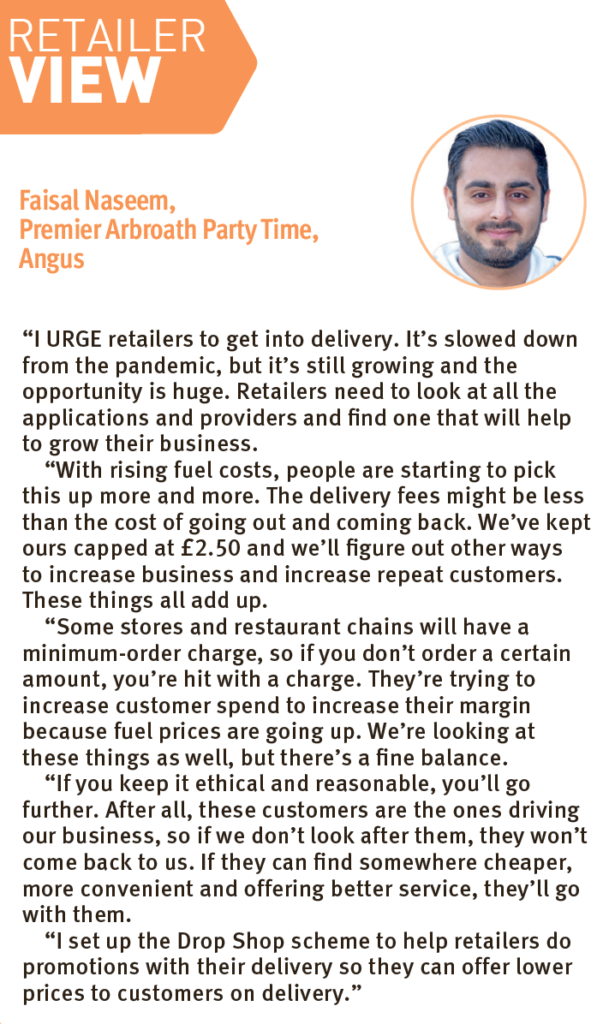
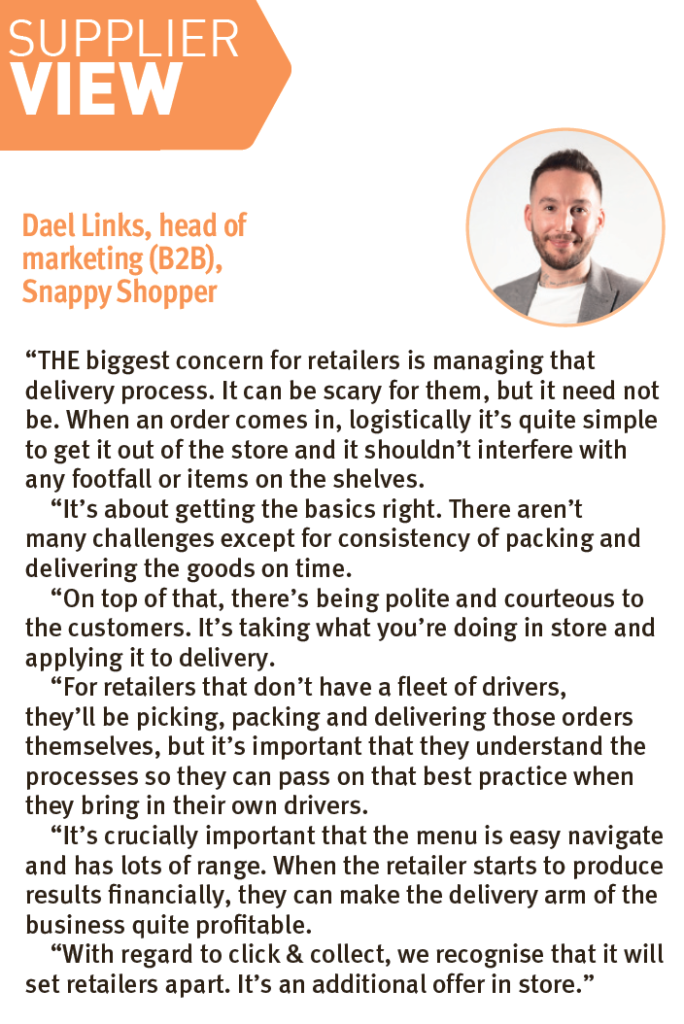
Get the word out
If your store is offering delivery – particularly if it’s just starting to – getting the word out about it essential. Make sure you have PoS and signage in store and outside the store telling people about your delivery service. You can also do leafl et drops in your local area. As well as this, your delivery service also needs to be communicated to customers beyond your immediate location if you are to attract customers further afi eld than your local demographic. To this end, Facebook and other social media sites are essential for promoting your service and also any deals that you have on offer. Even the delivery van itself can be a useful marketing tool. “We co-fund car wraps if the retailer decides to invest in them,” says Snappy Shopper’s Links. “Marketing is something we preach. If a retailer is delivering into an estate or a street, that van is a moving PoS. it’s not rocket science. We encourage them to fi nd those promotions to drive that customer engagement.”

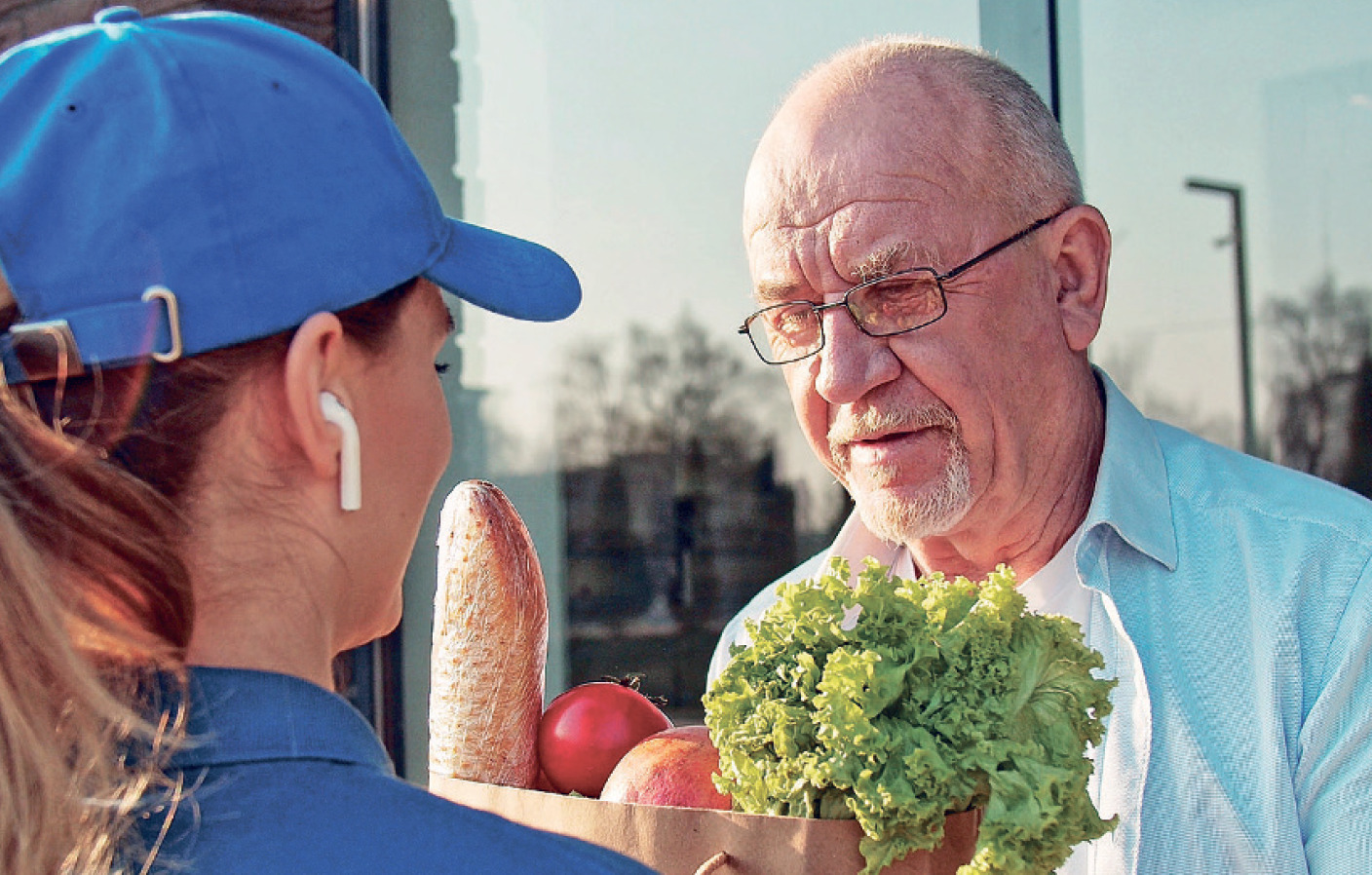

Comments
This article doesn't have any comments yet, be the first!